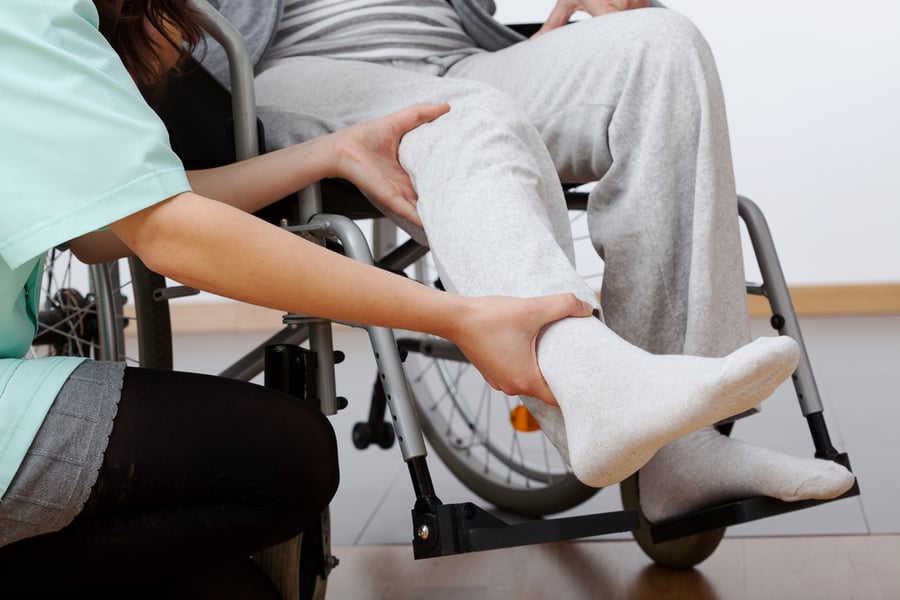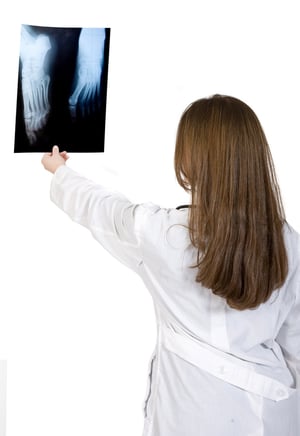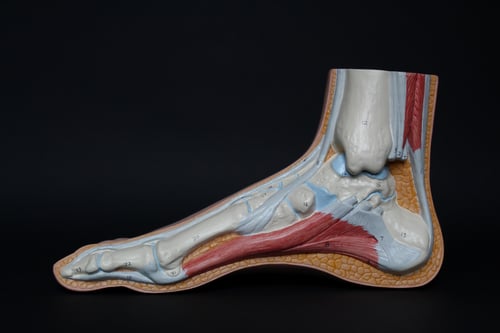Understanding “Drop Foot”: Symptoms, Causes, Diagnosis and Treatments

Drop foot, also known as foot drop, is not a disease but a medical condition characterized by the inability to lift the front part of the foot due to weaknesses or paralysis of the muscles that control foot movement.
This condition can significantly impact a person's mobility and quality of life.
“Sometimes foot drop is temporary, but it can be permanent. If you have foot drop, you might need to wear a brace on your ankle and foot to support the foot and hold it in position,” says the Mayo Clinic.
The National Institute of Neurological Disorders and Strokes says that individuals with foot drop scuff their toes along the ground or bend their knees to lift their foot higher than usual to avoid the scuffing, which causes what is called a “steppage gait."
“Due to weakness or paralysis, people who have foot drop often drag their toes when they walk. They may also have to lift their knee higher than usual to avoid dragging their toes. Walking this way may increase your risk of tripping and falling,” explains the Cleveland Clinic.
Foot drop can be unilateral (affecting one foot) or bilateral (affecting both feet). Foot drop is a symptom of an underlying neurological, muscular, or anatomical problem and is either temporary or permanent, depending on the cause.
Symptoms of Drop Foot
The primary symptom of drop foot is the difficulty or inability to lift the front of the foot and toes off the ground when walking.
This can lead to an abnormal gait, where the affected person may drag their foot or lift their leg higher than usual to clear the toes.
Other common symptoms and signs of drop foot include:
- Weakness in the leg or ankle.
- Numbness or tingling in the foot or leg.
- Foot slapping when walking.
- Tripping or stumbling frequently.
- Difficulty in controlling foot movement.
- Muscle atrophy (loss of muscle mass) in the affected leg.
Causes of Drop Foot
Foot drop is not a condition by itself. It is a symptom of another disorder and can result from various underlying medical conditions and injuries.
Some common causes include:
- Neurodegenerative disorders of the brain that cause muscular problems, such as:
o Multiple sclerosis
o Stroke
o Cerebral palsy
o Parkinson's disease
- Motor neuron disorders, such as:
o Polio
o Some forms of spinal muscular atrophy and amyotrophic lateral sclerosis (ALS, commonly known as Lou Gehrig's disease)
- Injury to the nerve roots, such as spinal stenosis.
- Peripheral nerve disorders, such as:
o Charcot-Marie-Tooth disease
o Acquired peripheral neuropathy (diabetes is the most common cause)
- Local compression or damage to the peroneal nerve as it passes across the fibular bone below the knee.
- Muscle disorders, such as:
o Muscular dystrophy
o Myositis
Risk Factors for Developing Drop Foot
Certain factors can increase the risk of developing drop foot:
- Leg Crossing: The peroneal nerve on the uppermost leg can be compressed when legs are crossed for a long period.
- Prolonged Kneeling: Occupations that require long periods of kneeling or squatting, such as laying floor tile or carpet, can result in drop foot.
- Wearing a Leg Cast: The Mayo Clinic says that plaster casts that enclose the ankle and end just below the knee can exert pressure on the peroneal nerve.
- Bed Rest: The Cleveland Clinic says that people on “bed rest” may be susceptible to peroneal nerve damage.
- Have Lost Weight: The Cleveland Clinic also says that people who have lost weight may have a higher risk of developing drop foot.
- Aging: As people age, they are more susceptible to neurological conditions and injuries.
- Trauma: Accidents, falls, or sports injuries can damage the nerves or muscles responsible for foot movement.
- Medical Conditions: Pre-existing conditions like diabetes, peripheral neuropathy, and multiple sclerosis can increase the risk of nerve damage.
How Drop Foot is Diagnosed
Diagnosing drop foot typically involves a comprehensive medical evaluation.
This may include:
- A physical examination to assess muscle strength, reflexes, and coordination.
- Electromyography (EMG) to measure electrical activity in muscles.
- Nerve conduction studies to evaluate nerve function.
- Imaging tests like an MRI, CT scan, ultrasound, or X-rays to identify any structural issues in the brain, spinal cord, or leg.
- Certain blood tests, such as blood sugar tests, to check for diabetes and diabetes-related neuropathy.
Medline Plus says that your healthcare provider will perform a physical exam and will look for the following signs:
- Loss of muscle control in the lower legs and feet.
- Atrophy of the foot or leg muscles.
- Difficulty lifting the foot and toes.
Treatment Options for Drop Foot
While there is a possibility that the cause of drop foot is temporary, such as nerve inflammation, the best course of action is to see a healthcare provider so you can get a proper diagnosis and treatment options.
These treatment options depend on the underlying cause and severity. Some common treatment options include:
- Physical Therapy: Physical therapists can design exercises to improve muscle strength, flexibility, and coordination.
- Orthotic Devices: Ankle-foot orthoses (AFOs) or braces can help support the foot and maintain a more natural gait.
- Nerve Stimulation: Functional electrical stimulation (FES) devices can stimulate the nerves and muscles to improve foot movement.
- Medications: In some cases, medications may be prescribed to manage pain or underlying conditions contributing to drop foot.
- Surgery: Surgical interventions like nerve decompression or tendon transfer may be necessary in severe cases.
“Treatment depends on the specific cause of foot drop. The most common treatment is to support the foot with lightweight leg braces and shoe inserts, called ankle-foot orthotics. Exercise therapy to strengthen the muscles and maintain joint motion also helps to improve gait,” says the National Institute of Neurological Disorders and Strokes. “Devices that electrically stimulate the peroneal nerve during footfall are appropriate for a small number of individuals with foot drop. In cases with permanent loss of movement, surgery that fuses the foot and ankle joint or that transfers tendons from stronger leg muscles is occasionally performed.”
The Cleveland Clinic says for chronic foot drop your provider may suggest:
- Fusing your ankle or foot bones.
- Tendon surgery in which a surgeon transfers the tendon from your other leg to the muscle in your affected left to help it pull your foot up.
Lifestyle Changes and Home Remedies
Living with drop foot may require some lifestyle adjustments:
- Use assistive devices like canes or walkers for stability. Use handrails when walking up and down stairs.
- Modify your home environment to reduce tripping hazards, with the Mayo Clinic recommending the following:
o Keep all floors clear of clutter.
o Avoid the use of loose or throw rugs.
o Move electrical cords away from walkways.
o Make sure your home, especially the stairways, is well-lit.
o Place fluorescent tape on the top and bottom of steps of stairways.
- Wear appropriate footwear with good arch support and cushioning.
- Stay physically active within your capabilities to maintain muscle strength and mobility.
- Consider adaptive equipment like ankle-foot orthoses or splints.
“Not being able to control your foot like you used to can be alarming. The good news is that drop foot can be temporary, and many cases go away completely with treatment,” says the Cleveland Clinic.
Drop foot is a challenging condition that affects a person's ability to walk and can have a significant impact on their daily life. Early diagnosis and appropriate treatment can help manage the symptoms and improve mobility.
Always consult with a healthcare professional such as Sweeney Foot and Ankle Specialists for personalized guidance and treatment options tailored to your specific situation.






